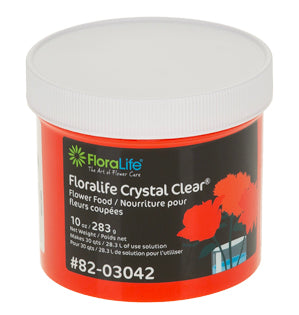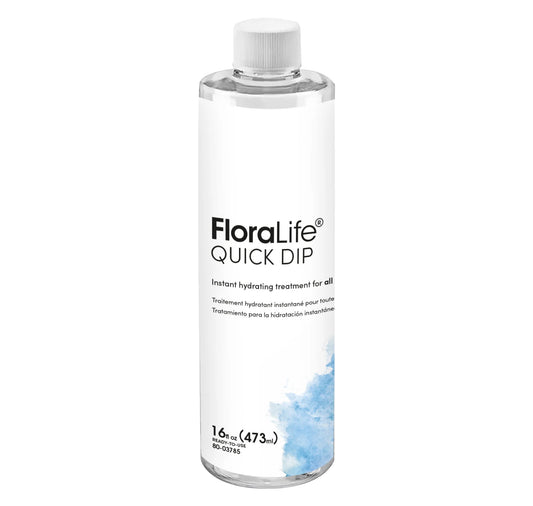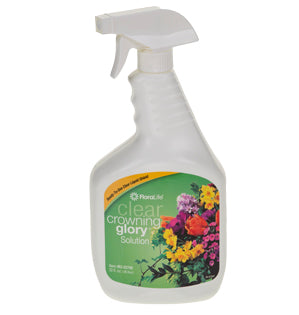Compote Wedding Centerpiece
Creating a centerpiece in a footed compote container without foam, with limited foliage and an abundance of flowers is currently a hot trend for wedding flowers. In this video demonstration Leanne uses Toffee roses, Oceania roses, peach carnations, hypericum, astilbe, butterfly ranunculus, hellebores and andromeda to create a gorgeous design in muted brown tones. Enjoy!
Video Transcription
Welcome to the Flower School .com video library. I'm Leanne Kesler, Director of the Floral Design Institute, and today I'm here to share with you a fabulous wedding compote centerpiece.
The flowers, a lovely collection, going for the muted brown tones, toffee roses, but then brightening it with a bit of peach, the Osiana roses, butterfly ranunculus, and then deepening into the wines with astilbe and callas, and a hypericum. The base, a footed compote. The mechanics, floral netting, tape it into place and then add fresh water mixed with flower food. The base of the design begins with the foliages, and I use these to establish the form. Maybe some beautiful andromeda. Some people call it lily-of-the-valley bush. I'm using it as a foliage, but it's also a flower as it's blooming out. Giving it a break or a cut, depending on how strong the stem is, then sliding it into the floral netting, making sure it's nice and securely placed. Coming back with another branch, radiating everything from a central binding point, creating an all-sided rounded form but with a little softer appearance to it, not a stiff round, more casual round. Then filling in with a little bit of seeded eucalyptus, adding another texture, letting it drape over the side of the container, lettings things shift into place. Bringing some out the opposite side so that it's two-sided. I don't want one side better than the other, then continuing with maybe a hard leaf, something a little broader, fuller. Fatsia is perfect. Letting it set in, breaking the line of the container, and you can see how it starts to quickly cover the mechanics and add substance to the design.
With the form established, it's basically fill in the blanks, creating a focal emphasis and drawing the eye throughout the design. You can group flowers, maybe take two of the carnations, give them a cut, then placing them in together, one slightly lower than the other, repeating that. Bring it around to the opposite side. Then the toffee rose being in that wonderful coppery brown. It looks fabulous with the peach. Placing another, radiating through that central binding point so you keep it balanced. Some you can group together, some you'll do just one. Brightening with the gorgeous Osiana. Reaching in and adjusting your leaves so that you can get some down low to help break the line of the container and some up a little higher, twisting to fit it in. The hypericum bring in that deep, deep hue, giving a cut, snapping it and then placing it in. Turn the design, looking at it from all sides to make sure you're balanced from left to right and front to back.
As I'm close to finishing, I like to set it on a lazy Susan, a turntable, so I can turn and look at it from all angles, double check that I have the things where I want them and they're balanced. It's nice to go back and add, tucking a little lower, drawing the eye inward in the design, actually tucking below the other flowers, so it peaks from underneath. Then maybe darkening with a bit of the wine hues. The hellebores are fabulous. Tucking them in, letting them come out a little bit further to the side. Drawing the eye outwards, repeating that, maybe over on this side. They look beautiful against the peach, finding the perfect little hole and then feeding it in. The astilbe as well, letting that come out, angling it, giving a little bit more dimension to the design. Astilbe is very thirsty, big water drinker, so making sure I get it down deeply into the water reservoir so it will hold well. It's long-lasting as long as it doesn't dry out. And get around and turning, and that deeper color just enhances the design. As I'm working looking for holes, where else do I need to fill in? Maybe another rose, maybe a little more of the hellebore. I need a perfect little spot to tuck it, turning and checking, making sure that everything is filled in.
The very last step is the delicate flowers. The little butterfly ranunculus, they're so fabulous. Loosening them up and letting them come out over the top of the other blossoms. The stems are divided, so maybe giving it a cut. That way I can place them in separately, not letting them get tangled, letting them just dance over the top, adding a delicate lightness to the design. Repeating. You can see it just adds a little bit of delicate beauty dancing over the top, enhancing the finished arrangement.
I had to laugh when I stopped and counted. Wasn't intentional, but I mostly worked with sevens today. So, I had seven of the toffee rose, seven of the Osiana rose, seven peach carnations, seven hypericum, seven astilbe, and seven butterfly ranunculus. Don't know how that happened, but it did. Then I have three hellebores, a bit of andromeda, bit of seeded eucalyptus, and fatsia leaves to finish out the design. The compote continues to be on trend. The designs, more flowers, less foliage oftentimes. The colors, these muted tones, very, very popular year round. You can see, it looks fabulous, can be perfect for a wedding, party, event or for your own home.
You'll find more creative inspiration at our website, Flower School .com. If you have questions, you can reach us through there or pick up the telephone and give us a call at (503) 223-8089. Now it's your turn. Find your most favorite compote, gather your flowers and create a design. Be sure to photograph, post it on social media and tag Floral Design Institute. That way I can see, and the entire tribe will see as well. Have fun and do something you love.





